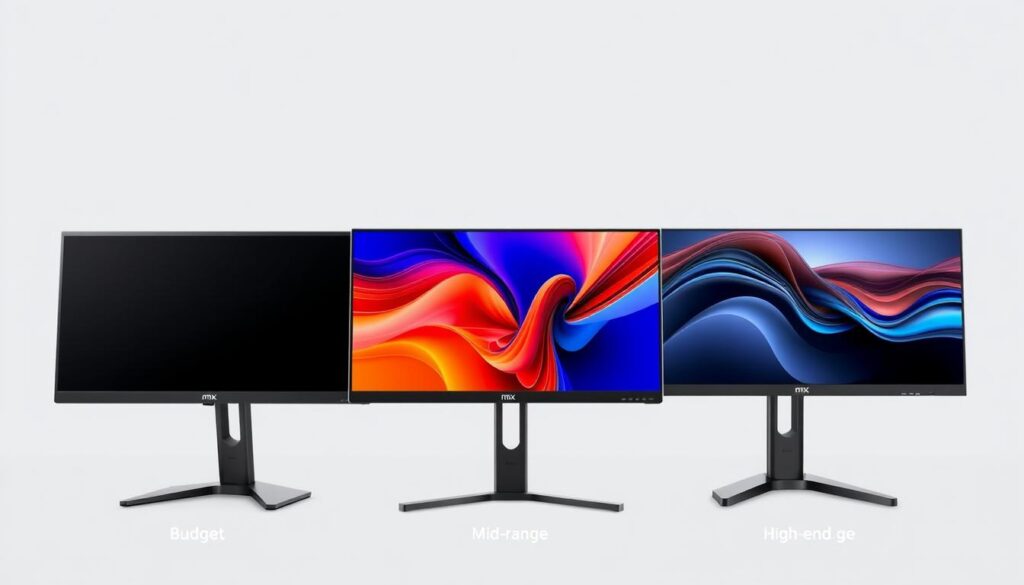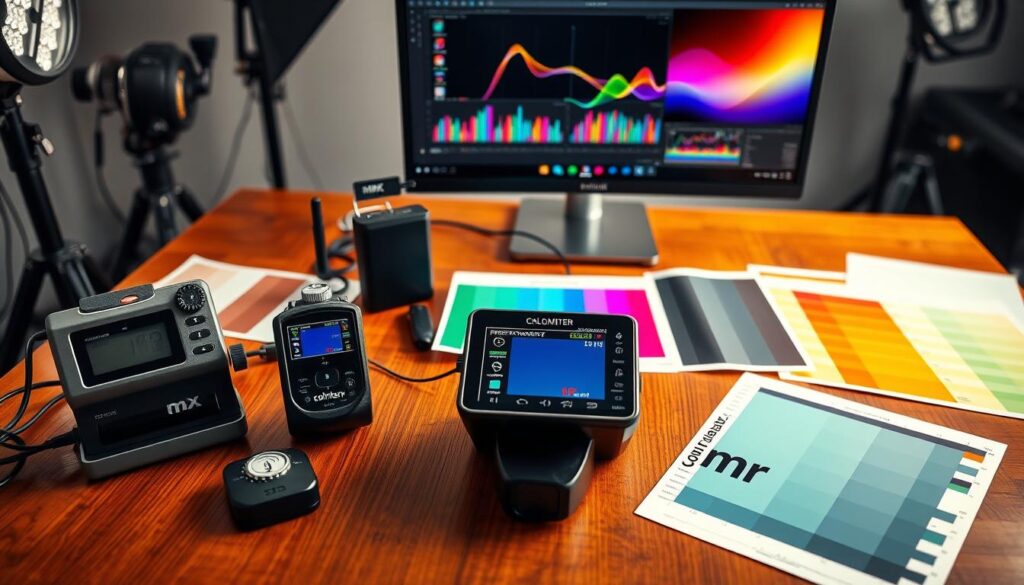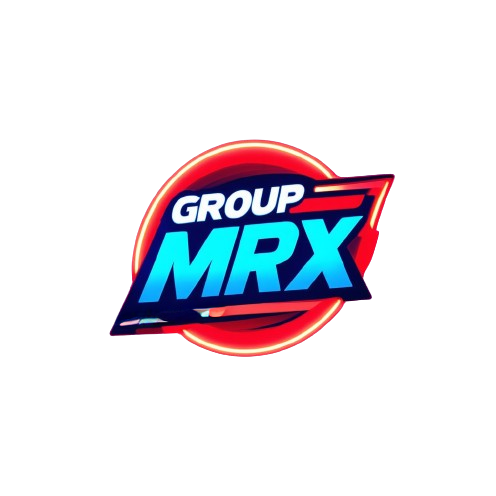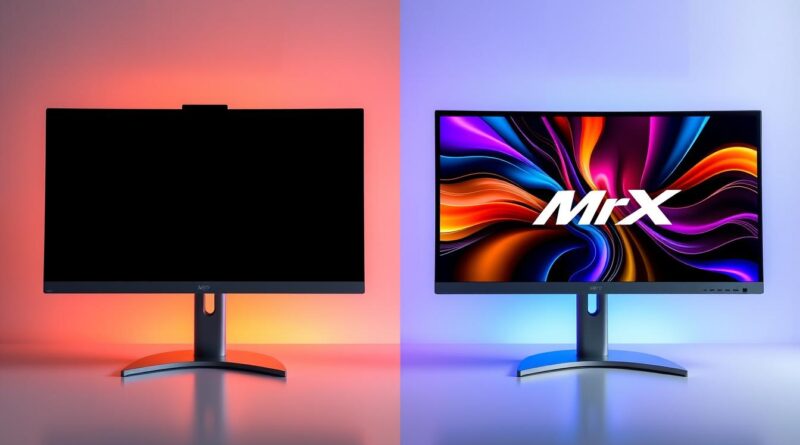From Cheap Monitor to Expensive: A Complete Guide
Did you know the global computer monitor market is set to hit $29.54 billion by 2027? This growth shows how much we rely on different displays. From affordable monitors to high-end screens, each has its own role. Knowing the differences is key when you’re looking for the right monitor.
This guide will take you through all types of monitors. It will help you choose based on what you need and how much you want to spend.
Key Takeaways
- Understanding monitor types is crucial for choosing the right one.
- There are significant differences between budget displays and high-end screens.
- Features vary widely across different uses, such as gaming, professional work, or casual viewing.
- Price does not always equate to quality; sometimes mid-range options perform the best.
- Knowing your specific needs can vastly improve your overall monitor experience.
Understanding Monitor Types and Their Features
Choosing a monitor means knowing about different types and their features. The market has various technologies, each with its own benefits. These include LCD vs. LED, refresh rates, and how resolution quality affects what you see.
LCD vs. LED: What’s the Difference?
LCD monitors use liquid crystals, while LED monitors are LCDs lit by LEDs. This makes LED monitors brighter, with better color and less energy use. LED monitors often show more contrast and colors than LCDs. They are generally better for power use and visual quality.
Refresh Rates Explained
Refresh rates show how often a monitor updates its image, in Hertz (Hz). Higher rates mean smoother motion and less blur. Gamers should look for monitors with 120 Hz or more for a better experience.
Resolution Impact on Visual Quality
Resolution quality is key for clear images. Higher resolutions mean more detail. For gaming, design, and watching media, a high resolution is important. Knowing your resolution needs can make you happier with your monitor.
| Feature | LCD | LED |
|---|---|---|
| Brightness | Lower brightness levels | Higher brightness, better contrast |
| Color Accuracy | Good, but limited | Superior, vibrant colors |
| Energy Consumption | More power consumption | More energy-efficient |
| Best Use | General use | Gaming, graphic design, multimedia |
Assessing Your Needs: Gaming, Work, or Casual Use?
Choosing the right monitor depends on your needs. Different activities need different features. Knowing your main use—gaming, work, or just watching—helps pick the best monitor for you.
Gaming Monitors: Key Features to Look For
For gaming monitors, look for specific features that boost your game. You should find:
- High refresh rates: A rate of at least 144Hz makes visuals smoother.
- Low response times: Times under 5ms cut down on motion blur, key for quick games.
- Adaptive sync technology: NVIDIA G-SYNC or AMD FreeSync stops screen tearing.
These features are key for a great gaming feel.
Professional Use: Color Accuracy Matters
For professional graphics, color accuracy is crucial. Look for monitors with:
- Wide color gamut: Supports true colors for design or photo editing.
- Factory calibration: Makes sure colors are consistent and accurate from the start.
- High resolution: A 4K resolution is great for detailed work.
Features that boost color accuracy can greatly improve your work quality.
Casual Viewing: Size and Comfort
For casual viewing, focus on size and comfort. Key factors include:
- Screen size: A bigger screen makes watching movies or shows better.
- Ergonomic designs: Adjustable stands help avoid neck and eye strain.
- Resolution: Full HD (1920 x 1080) is good for standard viewing, but 4K is better for high-definition content.
By focusing on size and comfort, you can make casual viewing more enjoyable.
The Price Spectrum: What to Expect
The market for monitors offers a wide range of options. You can find monitors at different price points. Knowing the differences between budget, mid-range, and high-end monitors helps you choose the right one for your needs and budget.
Budget Monitors: Pros and Cons
Budget monitors are great for those who want to save money. They are popular among students and casual users. These monitors have basic features that work well for everyday tasks. But, there are some downsides:
- Pros: They are affordable, perfect for simple tasks like browsing and document editing.
- Cons: They often lack in color accuracy, have lower refresh rates, and have smaller screens.
Mid-range Monitors: The Sweet Spot
Mid-range monitors offer a good balance of quality and price. They appeal to a wide range of users, from gamers to professionals. They have better features that enhance your viewing experience without costing too much. The main benefits are:
- They have improved resolution and refresh rates.
- They offer better color reproduction, great for photo editing and gaming.
- They come in various sizes and panel types to suit different preferences.
High-End Monitors: Are They Worth It?
High-end monitors are designed for serious gamers, designers, and professionals. They have top-notch features like 4K resolution and advanced color accuracy. Even though they are more expensive, they offer several advantages:
- They provide exceptional visual quality with vibrant colors and sharp details.
- They feature advanced technologies like HDR and adaptive sync.
- They are built to last, making them a good investment for serious users.

| Monitor Type | Price Range | Best For | Key Features |
|---|---|---|---|
| Budget Monitors | $100 – $300 | Students, casual users | Basic resolution, limited features |
| Mid-range Monitors | $300 – $700 | Gamers, professionals | Higher resolution, good refresh rates |
| High-End Monitors | $700+ | Gamers, designers | 4K resolution, advanced technologies |
Comparing Brands: Who Offers the Best Monitors?
Choosing a monitor can be tough, but brand reputation helps a lot. Each brand targets different needs and budgets. We’ll look at budget, mid-tier, and premium brands. Each has its own strengths, helping you find the right fit for your money and needs.
Popular Budget Brands to Consider
Budget brands offer great value without breaking the bank. Acer, BenQ, and AOC are known for reliable monitors. They’re perfect for everyday use.
- Basic resolution and refresh rates for casual gaming and office tasks
- Good deals for those watching their budget
- Quality build for a functional monitor without spending too much
Mid-tier Brands That Balance Quality and Price
Dell, LG, and ASUS are praised for their balance. They offer:
- Better specs like higher resolutions and faster refresh rates for gaming and work
- Improved color and viewing angles for watching media and design
- Features like adjustable stands and many connection options for different needs
Premium Brands: What You Get for Your Money
Samsung, Dell’s Ultrasharp, and Apple lead in quality. Premium brands mean:
- Top-notch build for beauty and durability
- Features like 4K, HDR, and gaming tech
- Great customer support and warranties for peace of mind
Key Specifications to Look For
When you’re looking for a monitor, knowing the key specs is crucial. You need to think about size and shape, the types of ports it has, and the panel technology. Each of these factors affects how well you’ll use the monitor.
Size and Form Factor Considerations
The right monitor size is key for comfort. Sizes range from 21 to 34 inches and more, meeting various needs. Think about whether you prefer a curved or flat screen. Curved screens are great for gaming, while flat ones work well for multiple screens.
Connectivity Options: HDMI, DisplayPort, and More
Knowing the ports available is important for easy setup. Look for HDMI, DisplayPort, and USB-C. These let you connect many devices, like computers and gaming consoles. Having many ports makes your monitor more versatile and future-proof.
Panel Types: IPS, TN, and VA Explained
Panel types have their own strengths and weaknesses. They affect color, speed, and viewing angles. Here’s a quick guide:
| Panel Type | Color Accuracy | Response Time | Viewing Angles | Best For |
|---|---|---|---|---|
| IPS | Excellent | Moderate | Wide | Photo editing, general use |
| TN | Good | Fast | Narrow | Gaming, budget builds |
| VA | Good | Moderate | Good | Movie watching, contrast |
Choosing the right monitor specs helps you make a smart choice. It matches your needs with today’s technology.
The Importance of Color Accuracy and Calibration
Color accuracy is crucial for professionals in graphic design, photography, and video editing. It affects the quality of their work. If colors are not accurate, the final product may not match what was intended.
Why Color Fidelity Matters for Professionals
In fields where visuals are everything, getting colors right is key. It helps professionals show their vision clearly. If colors are off, it can lead to unhappy clients or extra work.
Understanding color accuracy is important. It ensures images look the same on all devices. This keeps clients happy.
Tools and Software for Calibration
Using special tools for calibration is essential for monitor color accuracy. Tools like the X-Rite i1Display and Datacolor Spyder help adjust settings. They are key for high-quality graphics work.
Software like CalMAN and DisplayCAL also play a big role. They help make precise calibrations for different work styles. This boosts overall quality.
What to Look For in Factory Calibration
When picking a monitor, look at its factory calibration. A high Delta E value means better color accuracy right out of the box. Brands like EIZO and NEC often have pre-calibrated monitors.
Make sure the monitor supports wide color gamuts like Adobe RGB and DCI-P3. These improve color reproduction.

| Calibration Tool | Type | Features | Price Range |
|---|---|---|---|
| X-Rite i1Display | Hardware | Advanced calibration, display profiling | $200 – $300 |
| Datacolor Spyder | Hardware | Easy setup, multiple device profiles | $150 – $250 |
| CalMAN | Software | Professional calibration, pattern generation | $495 – $999 |
| DisplayCAL | Software | Open-source, extensive options | Free |
Accessories and Upgrades for Enhanced Experience
Improving your monitor experience means getting the right accessories. These include monitor stands and connection upgrades. They make your monitor more comfortable and functional, even during long use.
Monitor Stands, VESA Mounts, and Ergonomic Solutions
Having your monitor at the right height is key to avoiding eye strain. Monitor stands and VESA mounts help with this. They let you adjust the height and angle of your monitor for better comfort and posture.
Calibration Tools: When to Invest
Calibration tools are a must for those who need precise color accuracy. This is true for tasks like graphic design or video editing. Regular calibration keeps your monitor’s colors consistent and accurate.
Cables and Connection Upgrades for Best Performance
Using top-notch cables and connections makes a big difference. Old or low-quality cables can hold back your monitor’s performance. Upgrading to modern cables like HDMI and DisplayPort ensures your display works at its best.
| Accessory Type | Benefits | Examples |
|---|---|---|
| Monitor Stands | Improves posture and reduces eye strain | Adjustable Stand, Dual Monitor Stand |
| VESA Mounts | Free up desk space, allow for flexible positioning | Single Arm Mount, Full Motion Mount |
| Calibration Tools | Ensures color accuracy and consistency | Color Calibration Software, Hardware Calibrators |
| Cables | Enhances connectivity and performance | HDMI 2.1, DisplayPort 1.4 |
Maintenance Tips for Monitors of All Price Ranges
Keeping your monitor in good shape, no matter the cost, is key. It makes your screen clearer and can make your monitor last longer. Here are some cleaning tips and ways to fix common problems to keep your monitor working well.
Cleaning Your Monitor Safely
Cleaning your monitor often is important to keep it clear and dust-free. Here’s how to do it right:
- Use a microfiber cloth to avoid scratching the screen.
- Dampen the cloth with water or a special electronics cleaner. Don’t use harsh chemicals.
- Wipe the screen in circular motions, being careful not to press too hard.
- Clean the monitor’s frame and base with a different cloth to avoid spreading dirt.
Troubleshooting Common Issues
Even with regular cleaning, problems can still happen. Here are some common issues and how to fix them:
- Screen flickering: Check the cables and replace any that are damaged. Also, adjust the refresh rate in the display settings.
- Dead pixels: Use software to find and possibly fix stuck pixels.
- Input lag: Make sure your monitor is set to the right input and update your graphics drivers.
Lifespan: Maximizing Your Monitor’s Use
The life of a monitor depends on its type and how much you use it. To make your monitor last longer, follow these tips:
- Keep the monitor in a cool, well-ventilated area to avoid overheating.
- Use a screen saver to prevent static images from damaging the screen.
- Avoid putting the monitor in direct sunlight for too long.
Upgrading Your Monitor: When and Why to Do It
Knowing when to upgrade your monitor can really improve your computer use. Look out for signs like slow refresh rates, old tech that can’t handle new apps, or poor color quality. Also, if you’re doing more gaming or design work, you might need a better monitor.
Signs It’s Time for an Upgrade
Check if your monitor can handle the latest tech before buying a new one. If it can’t show high resolutions or refresh rates, or if you’re tired from using it, it’s time for a change. Keeping an eye on your monitor’s performance will help you know when it’s time to upgrade.
Budgeting for Your Next Monitor
It’s important to plan your budget for a new monitor, even if it’s a big upgrade. Decide how much you can spend and what features you need, like fast refresh rates for gaming or better color for work. Make sure your budget includes the monitor and any extra stuff you might need for a smooth transition.
Transitioning from One Type to Another
Switching monitors can be easy if you plan well. If you’re moving from a regular office monitor to a gaming one, learn about the key specs like refresh rates and response times. Look into different displays based on your needs, whether it’s for gaming or graphic design. Making an informed choice will help your new monitor meet your needs and improve your experience.
FAQ
What are the main differences between budget, mid-range, and high-end monitors?
Budget monitors are cheap and good for basic needs. They might not have the latest features or color accuracy. Mid-range monitors offer a good mix of quality and price, with better resolution and technology.
High-end screens give top-notch visuals and color accuracy. They are perfect for professionals and gamers who want the best.
How does resolution affect my viewing experience?
Resolution affects how clear and detailed images are on a monitor. Higher resolutions like 4K or 8K make images sharper. This is key for work like graphic design and video editing.
Higher resolution monitors also make gaming and movies better. They offer more immersive visuals.
What should I consider when choosing a monitor for gaming?
For gaming, look for a high refresh rate (144Hz or more) and low response time. This reduces lag. Also, check for support for G-SYNC or FreeSync.
Consider the panel technology (like IPS for better colors) and resolution. This ensures a great gaming experience.
Are expensive monitors worth the investment?
High-end monitors are worth it for their color accuracy, resolution, and features. They improve your work and gaming experience. If you need a monitor for professional tasks or gaming, a premium display is a good investment.
How important is color accuracy for monitor selection?
Color accuracy is key for professionals in photography, graphic design, and video production. A monitor with good color accuracy shows true-to-life visuals. This ensures your work looks right.
Calibration tools help keep this accuracy over time.
What are the essential connectivity options I need on a monitor?
Key connections include HDMI, DisplayPort, and USB-C. These let you connect various devices easily. Having many ports is important, for connecting to consoles, computers, or other devices.
Some monitors also have built-in USB hubs for extra convenience.
How can I maintain my monitor’s performance and lifespan?
To keep your monitor in top shape, clean it regularly and troubleshoot issues like flickering. Update software and drivers too. Adjusting brightness and avoiding direct sunlight also helps.
Following these tips can make your monitor last longer.
When is it time to upgrade my monitor?
It’s time to upgrade if your monitor’s performance drops or can’t meet your needs. If it can’t handle new technology or high-definition media, it’s time for a better display.




